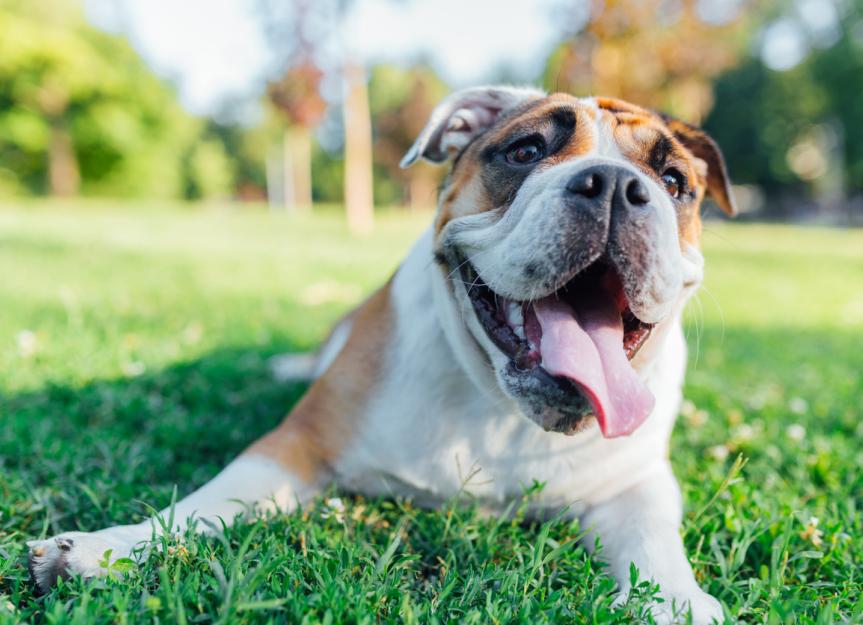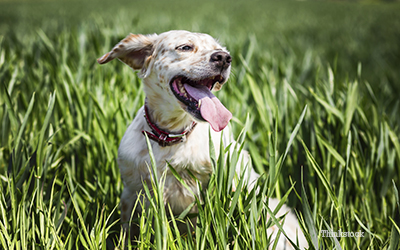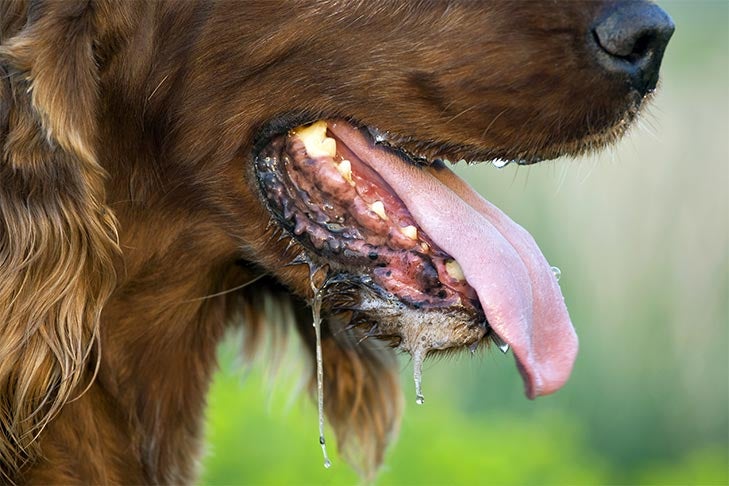Dogs do sweat, but unlike humans, they only have sweat glands in certain parts of their bodies, such as their paw pads. These glands don’t produce a large amount of sweat, so dogs rely more on other methods, like panting, to cool themselves down when it’s hot outside.
This is a common misconception, as many people believe that dogs don’t sweat at all. However, it’s important to understand that dogs have a different way of regulating their body temperature compared to humans. We will explore the topic of dogs sweating and how they keep themselves cool in various situations.
Do Dogs Sweat?
Many people wonder, do dogs sweat? While dogs do have a mechanism to cool themselves down, it’s not the same as humans. In this article, we will explore how dogs release heat and whether they actually sweat through their bodies.
Contrary to popular belief, dogs do have sweat glands. However, they are not distributed all over their bodies like ours. Instead, dogs rely on their paw pads to release a small amount of sweat. When a dog is hot or nervous, you might notice light, sweaty footprints left behind as they walk. The sweat evaporates from their hairless paw pads, helping to release a small amount of body heat.
In addition to sweating through their paw pads, dogs also use panting as a way to regulate their body temperature. When dogs pant, they inhale and exhale through an open mouth, which has a similar effect to sweating. Warm moisture moves out of their bodies through respiration and evaporates, helping to cool them down.
Dogs have two types of sweat glands: apocrine sweat glands and merocrine (also called eccrine) sweat glands. These glands are found throughout their bodies, but they only produce a very small amount of sweat. This minimal sweating is not very effective in cooling their bodies. So, while dogs do have sweat glands, sweating is not their primary method of regulating body temperature.
- Myth: Dogs sweat all over their bodies like humans.
- Fact: Dogs primarily sweat through their paw pads and use panting to cool down.
- Myth: Dogs release a significant amount of sweat to cool themselves down.
- Fact: Dogs produce minimal sweat, and their sweating is not an efficient way of cooling their bodies.
- Myth: Dogs don’t sweat at all.
- Fact: Dogs do have sweat glands, but their sweating mechanism is different from humans.
So, while dogs do release some sweat through their paw pads, it is not their main cooling method. Panting plays a crucial role in regulating their body temperature. If you notice your dog panting excessively, it is essential to ensure they have access to shade, water, and a cool environment to prevent overheating.

Credit: www.petmd.com
Sweating Through Paw Pads
When it comes to sweating, dogs have a unique mechanism that differs from humans. While humans can sweat from various parts of their body, dogs primarily sweat through their paw pads. However, it’s important to note that a dog’s paw pads have limited sweat production and are not very effective in cooling dogs down.
Limited Sweat Production In Paw Pads
Dogs have two types of sweat glands: apocrine and merocrine (also called eccrine) sweat glands. However, compared to humans, dogs’ sweat glands are far less developed, especially in their paw pads. The sweat glands in a dog’s paw pads produce a very small amount of sweat. This limited sweat production is not enough to effectively cool down a dog’s body temperature.
Ineffectiveness Of Paw Pads In Cooling Dogs
Unfortunately, relying on paw pads for cooling purposes can be ineffective for dogs. Dogs regulate their body temperature primarily through panting, which helps them release heat through their respiratory system. While sweating through their paw pads can provide minimal cooling, it is not the most efficient method for dogs to cool down, especially in hot weather.
Key Takeaways:
- Dogs primarily sweat through their paw pads.
- Paw pads have limited sweat production compared to other parts of the body.
- Sweating through paw pads is not an effective way for dogs to cool themselves down.
- Panting is the primary mechanism for dogs to regulate their body temperature.
| Sweating in Dogs | |
|---|---|
| Sweat Glands | – Dogs have two types of sweat glands: apocrine and merocrine (eccrine) glands. |
| Paw pads sweat | – Dogs primarily sweat through their paw pads. |
| Sweat production | – Paw pads have limited sweat production. |
| Cooling efficiency | – Sweating through paw pads is not an effective cooling method for dogs. |
In conclusion, while dogs do sweat through their paw pads, it is not the most efficient method for cooling themselves down. Paw pads have limited sweat production, and dogs primarily rely on panting to regulate their body temperature. Understanding this unique sweating mechanism in dogs can help pet owners ensure their furry friends stay cool and comfortable in hot weather conditions.
Sweating Through Panting
Contrary to popular belief, dogs do have sweat glands, but they only produce a small amount of sweat. They primarily sweat through their paw pads and rely on panting to help regulate their body temperature.
Respiration As A Cooling Mechanism
Unlike humans, who have sweat glands all over their bodies, dogs primarily rely on panting as a mechanism to cool themselves down. With their mouths open, dogs inhale and exhale rapidly, allowing warm moisture to move out of the body through respiration and evaporate. This process is similar to sweating and helps regulate their body temperature.
Comparison To Sweating
While dogs do have sweat glands, they are not as abundant as in humans. Dogs have two types of sweat glands: merocrine glands and apocrine glands. Merocrine glands are found in various parts of a dog’s body, including their paw pads. These glands release a minimal amount of sweat, which is not very effective in cooling down the body. In contrast, apocrine glands produce a small amount of sweat but are not used for cooling purposes.
Importance Of Panting For Dogs
Panting plays a crucial role in helping dogs regulate their body temperature, especially in hot weather or during exercise. By panting, dogs increase their respiration rate, which allows for the release of excess heat from their bodies. This cooling mechanism is essential for preventing overheating or heat stroke in dogs and helps keep them comfortable and safe in warm conditions.

Credit: www.pethealthnetwork.com
Sweat Glands In Dogs
Contrary to popular belief, dogs do sweat, but not as extensively as humans. Dogs primarily release sweat through their paw pads, although it is not an effective way for them to cool down in hot weather. Instead, dogs rely on panting to regulate their body temperature.
Types Of Sweat Glands In Dogs
In contrast to popular belief, dogs do have sweat glands. They possess two types of sweat glands: apocrine sweat glands and merocrine (also called eccrine) sweat glands. However, both types of glands produce a very small amount of sweat, which is not very effective in cooling their bodies.
Distribution Of Sweat Glands In Dogs
The distribution of sweat glands in dogs is quite different from humans. While humans have sweat glands all over their bodies, dogs rely on only their paw pads for sweating. However, it’s important to note that a dog’s paws do not produce much sweat, so this method alone is not sufficient for them to stay cool in hot weather.
Effectiveness Of Sweat Glands In Cooling
The effectiveness of sweat glands in cooling dogs is limited due to the small amount of sweat they produce. Dogs primarily rely on panting to regulate their body temperature. When dogs pant, warm moisture is released through respiration and evaporates, helping them cool down. Panting allows dogs to expel heat more efficiently than relying solely on their sweat glands.
Myths About Dog’s Sweat
Contrary to popular belief, dogs do have sweat glands, but they only produce a small amount of sweat. Dogs primarily rely on panting and sweating from their paw pads to regulate their body temperature, unlike humans who sweat all over their bodies.
So, do dogs sweat? Yes, but not in the same way humans do.
Misconceptions About Dogs Not Sweating
There are several myths surrounding whether or not dogs sweat. Many people believe that dogs do not sweat at all, but that couldn’t be further from the truth. While it is true that dogs do not sweat like humans do, with sweat secreted all over the body, they do have sweat glands. Dogs have two types of sweat glands – apocrine sweat glands and merocrine (also known as eccrine) sweat glands. However, it’s important to note that these sweat glands in dogs produce a very small amount of sweat, which is not very effective in body cooling. This misconception often leads to confusion about how dogs cool themselves and can impact how we care for them during hot weather.
Clarifying The Truth About Dog’s Sweat
To clarify, dogs primarily release sweat through their paw pads. This means that their paw pads are the only area where dogs have sweat glands that are capable of producing sweat. However, the amount of sweat produced by a dog’s paw pads is minimal and is not enough to effectively cool their body on hot days. So, while dogs do sweat, their ability to cool themselves through sweat is very limited.
Another common myth is that dogs sweat through their fur. Unlike humans, dogs do not have sweat glands distributed throughout their bodies, so they cannot sweat through their fur. This misconception often results in some pet owners believing that shaving their dog’s fur in hot weather will help keep them cool. However, shaving a dog’s fur can actually do more harm than good, as their fur helps protect them from the sun’s rays and provides insulation.
Understanding Dog’s Cooling Mechanisms
So, if dogs don’t rely on sweat to cool themselves, how do they regulate their body temperature? Dogs primarily use panting as their main cooling mechanism. When dogs pant, they inhale and exhale through an open mouth, which allows warm moisture to move out of the body through respiration and evaporate. This evaporative cooling process helps to dissipate excess heat and regulate their body temperature.
Additionally, dogs also cool themselves by seeking shade, lying on cool surfaces, and drinking water. These behaviors help dogs to cool down and prevent overheating. It’s important for pet owners to provide their dogs with access to shade, fresh water, and cool areas, especially during hot weather.

Credit: www.akc.org
Frequently Asked Questions For Do Dogs Sweat?
Do Dogs Sweat Through Their Fur?
Contrary to popular belief, dogs do have sweat glands, but they primarily sweat through their paw pads. Dogs have merocrine and apocrine sweat glands, but the amount of sweat produced is small and not very effective in cooling their bodies.
Dogs rely more on panting to regulate their body temperature.
Do Dogs Bodies Sweat?
Contrary to popular belief, dogs do have sweat glands, specifically apocrine and merocrine glands. However, these glands produce a very small amount of sweat, which is not very effective in cooling their bodies. Dogs primarily regulate their body temperature through panting and sweating from their paw pads.
Why Does My Dog Feel Like He’s Sweating?
Dogs do have sweat glands, but they don’t sweat like humans. Dogs primarily release sweat through their paw pads, which is not very effective in cooling their bodies. Instead, dogs use panting to regulate their body temperature.
Do Dogs Sweat Through Their Mouths?
Contrary to popular belief, dogs do have sweat glands, but they primarily sweat through their paw pads. Dogs also use panting to regulate their body temperature, similar to sweating. However, their paws do not produce much sweat, so it’s not the most effective way for them to cool down.
Conclusion
Contrary to popular belief, dogs do have sweat glands, but they function differently than human sweat glands. Dogs primarily release sweat through their paw pads, although the amount produced is minimal and not sufficient for effective body cooling. Instead, dogs rely on panting as their primary method of regulating body temperature.
So next time you see your dog panting, remember that it’s their way of sweating and staying cool.

